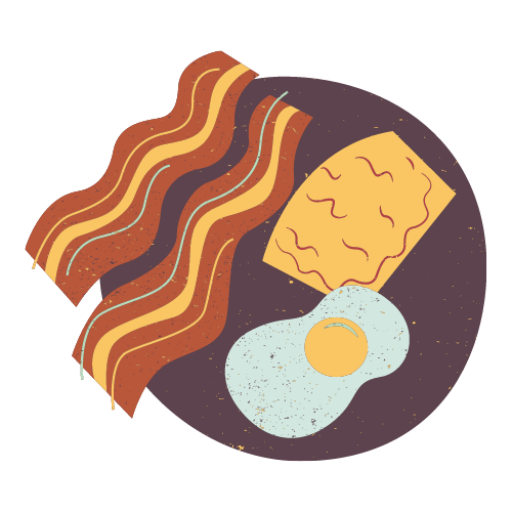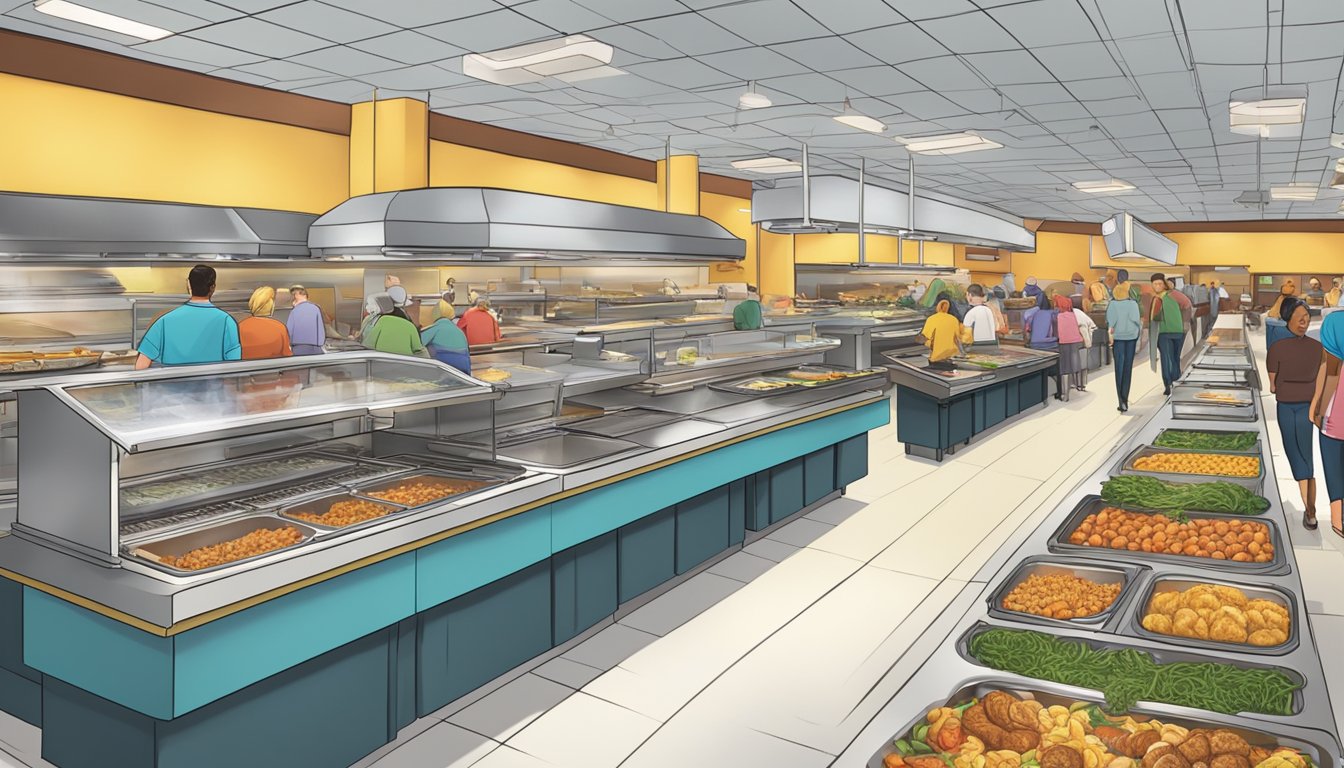Golden Corral, a beloved buffet franchise, has been evolving to meet changing consumer preferences and industry challenges. As of 2025, the restaurant chain continues to adapt its breakfast offerings, blending traditional favorites with innovative concepts.
Golden Corral’s breakfast buffet is poised for significant transformation in the coming years, incorporating new menu items, technology, and dining experiences. The company has already begun experimenting with made-to-order egg stations and expanding its selection of healthier options to cater to health-conscious diners.
While the classic buffet format remains popular, Golden Corral is exploring alternative service models to complement its core business. This includes the development of fast-casual spinoffs and the integration of drive-thru options at select locations. These innovations aim to attract a broader customer base and position the franchise for long-term success in the ever-changing restaurant industry.
The Evolution of Golden Corral

Golden Corral has undergone significant changes since its founding, adapting to industry shifts and global challenges. The buffet chain has embraced innovation while maintaining its core identity as a family-friendly dining destination.
Historical Overview and Achievements
Golden Corral opened its doors in 1973, quickly establishing itself as a popular buffet-style restaurant. The chain expanded rapidly, reaching hundreds of locations across the United States. Known for its extensive menu and all-you-can-eat format, Golden Corral became a household name in American casual dining.
By 2022, the company achieved systemwide sales of approximately $1.4 billion, representing a 21% increase from the previous year. This growth demonstrated Golden Corral’s resilience and ability to attract customers even in challenging times.
Adapting to Change: COVID-19 and Beyond
The COVID-19 pandemic posed unprecedented challenges for buffet restaurants. Golden Corral responded by reimagining its business model. The chain introduced drive-thrus, a virtual concept, and fast-casual spinoffs to meet changing consumer needs.
Golden Corral also explored smaller restaurant footprints and developed a 100-year plan to ensure long-term sustainability. These adaptations paid off, with the company seeing a 37% increase in same-store sales during a six-week period post-pandemic.
The buffet chain’s willingness to innovate while maintaining its core offerings has positioned it well for future growth in the ever-evolving restaurant industry.
Modernizing the Buffet Experience

Golden Corral is embracing change to elevate its buffet offerings. The restaurant chain is exploring tech-driven solutions, experimenting with fast-casual elements, and redesigning its spaces to create a more contemporary dining experience.
Tech-Driven Innovations
Digital menu boards are replacing traditional signage at Golden Corral, providing real-time updates on available dishes. Self-service kiosks allow guests to customize their orders and pay without waiting in line. The company is also testing a mobile app for contactless ordering and payment.
RFID-enabled plates track food consumption patterns, helping the kitchen staff optimize menu planning and reduce waste. Smart serving stations use sensors to monitor food temperatures and freshness, ensuring quality and safety.
Golden Corral is exploring robotic assistants for tasks like bussing tables and refilling beverages, freeing up staff to focus on customer service.
From Buffet to Fast-Casual
Golden Corral is incorporating fast-casual elements to appeal to younger diners and streamline operations. Made-to-order stations feature chefs preparing dishes in front of guests, adding a touch of theater to the dining experience.
The restaurant is testing a hybrid model that combines buffet staples with customizable options. Guests can build their own bowls or salads, choosing from a curated selection of ingredients.
To-go options have expanded, with dedicated pickup areas for online orders. Family meal deals and catering services cater to those preferring to dine at home.
Revamping Physical Spaces
Golden Corral’s redesigned interiors feature modern, open layouts with improved traffic flow. Comfortable seating areas and varied table sizes accommodate different group sizes and dining preferences.
Lighting has been updated to create a warmer ambiance, moving away from the bright, cafeteria-like feel of traditional buffets. New color schemes and decor elements reflect a more upscale aesthetic.
The serving area now includes distinct “food neighborhoods” organized by cuisine type. This arrangement makes it easier for guests to navigate the buffet and discover new dishes.
Outdoor dining spaces and drive-thru windows are being added to select locations, providing more options for customers and adapting to changing dining habits.
Expanding Service Models

Golden Corral is diversifying its offerings beyond traditional buffet-style dining. The company is exploring new service models to meet changing customer preferences and expand its market reach.
Drive-Thrus and Curbside Pickup
Golden Corral is adapting to the growing demand for convenient, on-the-go dining options. The chain is testing drive-thru services at select locations, allowing customers to order and pick up their favorite buffet items without leaving their vehicles.
Curbside pickup has also been implemented, enabling customers to place orders online or via mobile app and collect their meals from designated parking spots. This service caters to busy families and individuals seeking quick, hassle-free dining solutions.
These new options aim to attract customers who may not have time for a sit-down buffet experience but still crave Golden Corral’s diverse menu offerings.
GC Grill House Concept
Golden Corral is venturing into the full-service restaurant sector with its GC Grill House concept. The first location opened in Lake Placid, Florida, in 2021, marking a significant departure from the brand’s buffet roots.
GC Grill House offers a more upscale dining experience, featuring table service and a menu focused on grilled specialties. This concept allows Golden Corral to tap into a different market segment and attract customers seeking a more refined dining atmosphere.
The GC Grill House menu includes signature steaks, seafood, and other grilled items, complemented by a selection of sides and desserts. This expansion demonstrates Golden Corral’s commitment to evolving its brand and diversifying its revenue streams.
Menu Innovations and Food Trends

Golden Corral is poised to introduce exciting changes to its breakfast offerings. The restaurant chain plans to adapt its menu to evolving consumer preferences while maintaining its signature buffet-style service.
The Rise of Comfort Foods
Golden Corral recognizes the enduring appeal of comfort foods. The breakfast menu is set to feature more nostalgic dishes that evoke feelings of warmth and familiarity. Expect to see an expanded selection of homestyle biscuits and gravy, alongside new variations of French toast and waffles.
Classic breakfast meats like bacon and sausage will remain staples, but with gourmet twists. Think maple-glazed bacon or spicy chorizo sausage links. The restaurant may also introduce regional comfort food specialties to cater to local tastes.
Healthy and Sustainable Options
In response to growing health consciousness, Golden Corral plans to bolster its selection of nutritious breakfast items. Look for an increased variety of fresh fruits, whole grain options, and plant-based protein alternatives.
The chain is exploring partnerships with local farms to source fresh, seasonal produce. This move aims to improve food quality while supporting sustainable agriculture practices.
New additions may include customizable smoothie bowls, quinoa breakfast skillets, and avocado toast stations. Golden Corral is also considering clearly labeled low-carb and gluten-free options to accommodate diverse dietary needs.
A Comparative Analysis

Golden Corral’s breakfast offerings differ from other dining establishments in several key ways. This analysis examines how the chain stacks up against competitors in the buffet and fast-casual restaurant segments.
Golden Corral Versus Other Buffets
Golden Corral’s breakfast buffet stands out for its expansive selection. The chain offers made-to-order eggs, a feature not commonly found at other buffets. This allows customers to customize their egg dishes to their preferences.
Golden Corral’s breakfast buffet also includes unusual items like ice cream, appealing to those with a sweet tooth. This sets it apart from more traditional breakfast buffets.
The chain’s focus on quality and variety aligns with current consumer trends. Many diners seek diverse options when eating out for breakfast.
Golden Corral’s weekend-only breakfast service differentiates it from some competitors. Other buffet chains may offer breakfast daily, potentially giving them an edge in weekday morning traffic.
Comparison With Fast-Casual Restaurants
Golden Corral faces competition from fast-casual chains in the breakfast market. Fast-casual restaurants often emphasize speed and convenience, which can be attractive to time-pressed morning diners.
Many fast-casual chains offer made-to-order breakfast items, similar to Golden Corral’s egg station. However, they typically lack the extensive variety found in a buffet setting.
Golden Corral’s all-you-can-eat model differs significantly from the single-serving approach of most fast-casual restaurants. This can appeal to customers seeking value for money.
The chain’s new Homeward Kitchen concept aims to compete more directly with fast-casual establishments. It offers a smaller footprint and focuses on home-style cuisine, potentially attracting customers who prefer a more intimate dining experience.
Texas Roadhouse, while not a direct competitor in the breakfast space, shares Golden Corral’s emphasis on hearty, home-style meals. This similarity could inform Golden Corral’s strategy as it expands its breakfast offerings.
Customer-Centric Approach

Golden Corral aims to prioritize customer needs and preferences in its breakfast offerings. This approach focuses on gathering valuable feedback and creating personalized dining experiences.
Leveraging Customer Feedback
Golden Corral actively seeks input from diners to shape its breakfast menu. The restaurant chain implements surveys, comment cards, and social media monitoring to gauge customer satisfaction. This data helps identify popular items and areas for improvement.
Golden Corral’s culinary team analyzes feedback to develop new dishes and refine existing ones. They pay close attention to dietary trends and regional preferences. This process ensures the breakfast buffet remains fresh and appealing to a wide range of customers.
The company also uses customer insights to optimize its service model. This includes adjusting operating hours, streamlining the buffet layout, and training staff to better assist diners.
Personalized Dining Experience
Golden Corral strives to create a tailored breakfast experience for each customer. The restaurant offers a diverse selection of breakfast items to cater to various tastes and dietary needs.
Made-to-order stations allow diners to customize their meals. Guests can request specific ingredients or preparation methods for items like omelets and waffles. This level of personalization enhances customer satisfaction and encourages repeat visits.
The restaurant also explores technology-driven solutions to personalize the dining experience. This may include mobile apps for pre-ordering, digital menu boards with nutritional information, and loyalty programs that track individual preferences.
Strategic Growth and Franchise Opportunities

Golden Corral’s franchise expansion plans aim to bring its popular breakfast offerings to new markets nationwide. The company is actively seeking qualified franchisees to help grow the brand and reach more customers.
Identifying New Markets
Golden Corral has identified several key areas for potential expansion. The company is targeting major metropolitan areas with strong population growth and favorable demographics. Chicago stands out as a prime location for new franchises due to its large population and diverse neighborhoods.
Golden Corral analyzes factors like household income, traffic patterns, and competition when selecting new sites. The company provides franchisees with detailed market research and site selection assistance to ensure optimal locations.
Franchise Success Stories
Many Golden Corral franchisees have found great success with the brand. One multi-unit operator in Texas saw breakfast sales increase 25% after implementing new menu items and marketing strategies suggested by corporate.
A franchisee in Florida credits Golden Corral’s operational support and training programs for helping him achieve profitability within the first year. The company offers extensive initial and ongoing training to franchisees.
Golden Corral seeks franchisees with restaurant experience and strong business acumen. The initial investment ranges from $2.2 million to $6.6 million, depending on location and restaurant size.
The Future of Independent and Chain Restaurants

The restaurant industry faces significant changes in the coming years. Market trends and economic factors will impact both independent eateries and major chains differently, reshaping the dining landscape.
Predicting Market Trends
Consumer preferences continue to evolve rapidly. Health-conscious diners seek fresher, more nutritious options. Convenience remains crucial, driving growth in delivery and takeout. Technology integration, like mobile ordering and contactless payments, is becoming standard. Sustainability practices attract environmentally aware customers. Chains like Golden Corral adapt by offering healthier menu items and expanding off-premise capabilities. Independent restaurants often lead in farm-to-table concepts and unique dining experiences.
Restaurant formats are diversifying. Fast-casual establishments gain market share. Ghost kitchens and virtual brands emerge as low-overhead alternatives. Traditional sit-down restaurants invest in ambiance and service to justify higher prices.
Independent Restaurants: A Struggle for Survival?
Independent restaurants face mounting challenges. Rising food and labor costs squeeze profit margins. Competing with chains’ marketing budgets and supply chain efficiencies is difficult. However, independents retain advantages in flexibility and local appeal. They can quickly adjust menus and cater to neighborhood tastes. Personal connections with regular customers foster loyalty.
To thrive, independents must leverage their strengths. Unique concepts and chef-driven menus differentiate them from chains. Social media marketing helps build brand awareness cost-effectively. Collaborations with local suppliers and community involvement enhance their appeal. Some independents find success by specializing in niche cuisines or dietary needs underserved by larger chains.




